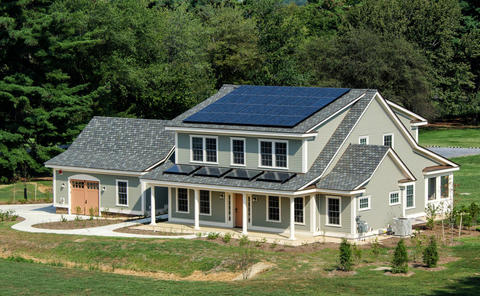
Once upon a time (in 2008), the King of California (Governor Schwarzenegger) decreed that “By the year 2020, all new homes built in my Kingdom shall be zero-net-energy.” Even with 12 years to prepare, this legislative goal made a lot of news in the building industry. At least for a while it did. Now, halfway into 2020, many people, inside and outside of California are wondering if it has happened. Did all the King’s horses and all the King’s minions enact the King’s decree? Kidding aside, depending on who you ask, the answer still could be:
- Yes!
- No!
- Kinda, maybe, sort of…
- Not really…
- Good question—what is going on?
The range of answers is not surprising, given how confusing the program has been from the beginning. But the most accurate response would be D: not really. Okay, arguably, that’s the same as B: No!, but the “not really” part is worthy of explanation, because as I learned last week, not even everyone in the energy business in California has gotten the memo.
What’s zero-net-energy?
First—and you probably know this, but it’s an important part of the story—zero-net-energy is defined as netting out a home’s energy usage to zero by providing renewable energy (generally, produced onsite) on an annual basis.
After the governor made this pronouncement, state agencies, utilities, and other energy wonks sharpened their pencils and got busy figuring out how to make it happen. This resulted in a fairly sharp increase in the slope of the curve of energy efficiency improvements required by the State’s energy code (Title 24, Part 6), which gets ratcheted up every three years. At the same time, photovoltaic (PV) installations were rapidly multiplying—due both to the zero-net-energy directive and to the state’s Global Warming Solutions Act of 2006,…
Weekly Newsletter
Get building science and energy efficiency advice, plus special offers, in your inbox.

This article is only available to GBA Prime Members
Sign up for a free trial and get instant access to this article as well as GBA’s complete library of premium articles and construction details.
Start Free TrialAlready a member? Log in















5 Comments
I am curious why this was not easily predictable?
Isn't it obvious that without storage the curve is not affected in a useful way?
If storage is the solution to the “Duck Curve”, why not create a tax credit, from industry, State or Feds, specifically for batteries? Is it economically feasible and worthwhile? Maybe that will increase battery maker options and help reduce prices.
We definitely give, or waste, a lot of tax credits to Coal, Gas, Oil, Corporate Framing, etc. that would make you wonder where the priorities and politics are.
Joe this was predicted. NREL wrote a report in 2008 predicting the duck curve before it even happened (or had its name). https://www.nrel.gov/news/program/2018/10-years-duck-curve.html
"We don’t have enough energy storage capacity," doesn't have to simply mean we don't have enough batteries (nor do grid operators think it means this). It's also arguably not the best 'simplest terms' since demand response is left out of that category, and should certainly not be.
The conclusion to me reads: 'net-zero-energy is arbitrary. What really matters is efficiency. Or perhaps net-zero-power. But, Net-Zero as a concept drives efficiency due to the catchy sound and policy backing it.'
https://www.nrel.gov/docs/fy16osti/65023.pdf
"These [approaches to mitigate the duck curve] can be summarized by
two more general approaches, which we illustrate below as fattening the duck and flattening the
duck.
Fattening the duck represents all approaches that increase the flexibility of the grid and allow
greater instantaneous penetration of variable generation resources.
Alternatively, flattening the duck acts to shrink the belly shape by shifting supply/demand
patterns to allow solar energy to meet parts of the load that would not normally be provided in
the middle of the day. This includes either shifting load via responsive demand or shifting supply
by the use of energy storage (Lazar 2014)."
Thermal storage has value and adds flexibility as well. It would be nice to see incentives for homeowners to store excess capacity in a thermal battery, i.e. electric resistance water heater or buffer tank.
Log in or become a member to post a comment.
Sign up Log in